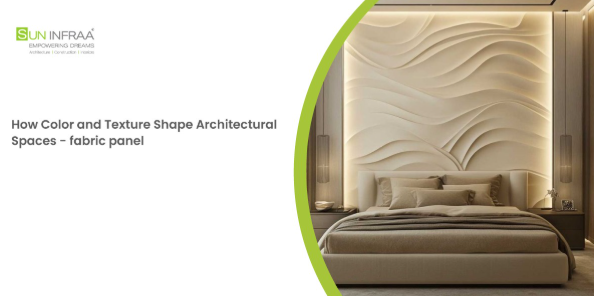How Color and Texture Shape Architectural Spaces
Architecture is not just about walls, roofs, and windows. It’s also about how people feel inside a space. Two powerful tools that shape the look and mood of a space are color and texture. These elements help bring life to buildings, turning simple structures into welcoming homes, inspiring offices, or calming retreats.
Let’s explore how color and texture work together to create meaningful and beautiful architectural spaces.
1. The Role of Color in Architecture
Color is more than decoration—it influences how we feel. In architectural design, the choice of color can change how a room looks and how people experience it.
- Light colors, like white, cream, and pale grey, can make a room feel bigger, cleaner, and more open.
- Warm colors, like beige, brown, or soft yellows, add comfort and warmth to a space.
- Cool colors, like blue and green, can bring a sense of calm and relaxation.
- Bold colors, such as red, black, or dark blue, can add drama and focus to certain parts of a space.
Architects use color to highlight important areas, create contrast, or blend spaces with the natural environment. The right color scheme helps guide the eye and set the tone of a building—whether it’s peaceful, energizing, or elegant.
2. The Power of Texture in Design
Texture is about how a surface feels or looks like it would feel. It can be smooth like glass, rough like stone, soft like fabric, or hard like metal. In architecture, texture adds depth, interest, and personality to a space.
There are two types of texture:
- Visual texture, which is how something looks—like a wall that appears rough even if it’s smooth.
- Physical texture, which is how it actually feels to the touch.
Combining different textures can make a room more inviting. For example, pairing smooth walls with wooden beams or soft curtains can create a cozy, balanced space. Texture also helps absorb or reflect light, affecting the brightness and temperature of a room.
3. Using Color and Texture Together
When color and texture are used together, they can completely transform a space. A plain white wall can feel cold and empty, but adding a textured finish or warm lighting can make it feel stylish and comfortable. A modern kitchen with sleek metal surfaces can be softened with warm wooden shelves or textured tiles.
Architects often use neutral colors as a base, then add interest with textures—like stone walls, woven fabrics, or patterned floors. This layering technique makes spaces feel more alive and dynamic.
4. Creating Emotional Impact
The final goal of using color and texture in architecture is to create an emotional connection. These design choices affect mood and comfort. A well-designed space can make people feel at peace, focused, excited, or inspired—all through the careful use of color and texture.
Conclusion
Color and texture are silent but powerful elements in architectural design. They shape how we see, feel, and move through a space. When used thoughtfully, they can turn simple buildings into meaningful places that tell a story and leave a lasting impression. In the world of architecture, it’s not just about building—it’s about feeling.



